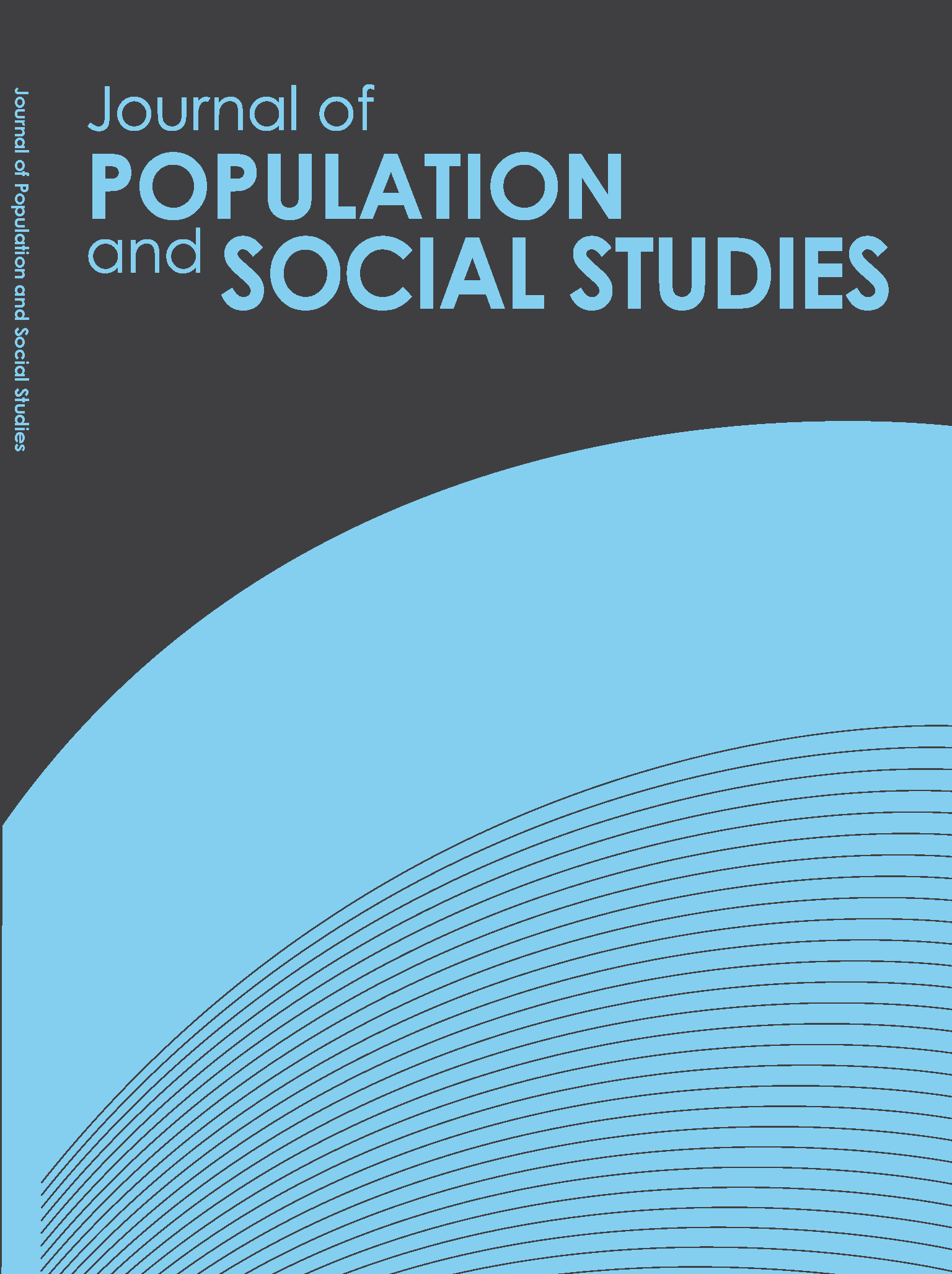Forecasting the Length of Grandparenthood With Limited Information Resources: Evidence From Russia
Main Article Content
Abstract
The study aims to develop and implement methodological approaches for forecasting the length of grandparenthood with limited information resources. Such approaches are in demand in many countries with poor statistics about grandparenthood. The authors use methods of mathematical modeling and trend extrapolation based on time series analysis. Data from official Russian statistics and the statistical databases of the world’s leading institutes of demography are used as the information base. According to forecasts, the length of grandparenthood in Russia will increase in 2021–2025. The predicted growth rate of length of grandparenthood among men is higher than among women. The obtained results develop the methodology of demographic forecasting and contribute to developing the demography of grandparenthood. Moreover, considering the benefits that families receive from intergenerational interaction, the forecast of the length of grandparenthood is vital for understanding the society’s prospects of obtaining social, economic, and demographic effects directly related to active intrafamily interaction between grandparents and grandchildren.
Article Details

This work is licensed under a Creative Commons Attribution-NonCommercial-NoDerivatives 4.0 International License.
References
• Bagirova, A. P., & Shubat, O. M. (2020). Статистические оценки численности прародителей в Российских регионах [Statistical estimates of the number of grandparents in Russian regions]. Theory and Practice of Social Development, 12(154), 42–46. https://doi.org/10.24158/tipor.2020.12.7
• Bulygina, M. V., & Komarova, S. V. (2019). Прародители и внуки (обзор зарубежных исследований) [Grandparents and grandchildren (review of foreign studies)]. Journal of Modern Foreign Psychology, 8(4), 97–105. https://doi.org/10.17759/jmfp.2019080410
• Burn, K., & Szoeke, C. (2015). Is grandparenting a form of social engagement that benefits cognition in ageing? Maturitas, 80(2), 122–125. https://doi.org/10.1016/j.maturitas.2014.10.017
• Chapman, S. N., Lahdenperä, M., Pettay, J. E., & Lummaa, V. (2017). Changes in length of grandparenthood in Finland 1790–1959. Finnish Yearbook of Population Research, 52, 3–13. https://doi.org/10.23979/fypr.65346
• Federal State Statistics Service. (2017). Выборочное наблюдение репродуктивных планов населения [Sample survey of reproductive plans of the population]. https://rosstat.gov.ru/free_doc/new_site/RPN17/index.html
• Federal State Statistics Service. (2020a). Ожидаемая продолжительность жизни при рождении [Life expectancy at birth]. (Dataset). https://rosstat.gov.ru/storage/mediabank/R80ZmXzD/demo26.xlsx
• Federal State Statistics Service. (2020b). Методологические пояснения к демографическому прогнозу до 2035 года [Methodology of demographic forecast until 2035]. https://rosstat.gov.ru/storage/mediabank/prognoz777.doc
• Federal State Statistics Service. (2020с). Ожидаемая продолжительность жизни при рождении: прогноз [Life expectancy at birth: projections]. (Dataset). https://rosstat.gov.ru/storage/mediabank/progn7.xls
• Fomby, P., Krueger, P. M., & Wagner, N. M. (2014). Age at childbearing over two generations and grandchildren’s cognitive achievement. Research in Social Stratification and Mobility, 35, 71–88. https://doi.org/10.1016/j.rssm.2013.09.003
• Geurts, T., Van Tilburg, T., Poortman, A. R., & Dykstra, P. A. (2015). Child care by grandparents: changes between 1992 and 2006. Ageing & Society, 35(6), 1318¬–1334. https://doi.org/10.1017/S0144686X14000270
• Hank, K., & Buber, I. (2009). Grandparents caring for their grandchildren: Findings from the 2004 Survey of Health, Ageing, and Retirement in Europe. Journal of Family Issues, 30(1), 53–73. https://doi.org/10.1177/0192513X08322627
• Kalachikova, O. N., & Gruzdeva, M. A. (2018). Участие прародителей в воспитании внуков как форма личной самореализации [Participation of grandparents in the education of grandchildren as a form of personal self-realization]. In The IX Ural Demographic Forum "Demographic and family policy in the context of Sustainable Development Goals" (pp. 522–527). Institute of Economics of the Ural Branch of the Russian Academy of Sciences. https://elar.urfu.ru/handle/10995/68280
• Kemp, C. L. (2007). Grandparent—grandchild ties: Reflections on continuity and change across three generations. Journal of Family Issues, 28(7), 855–881. https://doi.org/10.1177/0192513X07299599
• Krasnova, O. V. (2002). Grandmothers in the family. Sociological Research, 41(2), 81-96. https://doi.org/10.2753/SOR1061-0154410281
• Leopold, T., & Skopek, J. (2015). The demography of grandparenthood: An international profile. Social Forces, 94(2), 801–832. https://doi.org/10.1093/sf/sov066
• Margolis, R. (2016). The changing demography of grandparenthood. Journal of Marriage and Family, 78(3), 610–622. https://doi.org/10.1111/jomf.12286
• Margolis, R., & Verdery, A. M. (2019). A cohort perspective on the demography of grandparenthood: Past, present, and future changes in race and sex disparities in the United States. Demography, 56(4), 1495–1518. https://doi.org/10.1007/s13524-019-00795-1
• Max Planck Institute for Demographic Research (MPIDR) & Vienna Institute of Demography (VID). (2021, April 5). Human Fertility Database [Dataset]. Max Planck Institute for Demographic Research (Germany) and Vienna Institute of Demography (Austria). https://www.humanfertility.org/cgi-bin/main.php
• Sarti, R. (2010). Who cares for me? Grandparents, nannies and babysitters caring for children in contemporary Italy. Paedagogica Historica, 46(6), 789–802. https://doi.org/10.1080/00309230.2010.526347
• Shubat, O. M., & Bagirova, A. P. (2020). Продолжительность прародительства в России: статистические оценки и возможности управления в рамках национального проекта «Демография» [Duration of grandparenthood in Russia: Statistical assessments and management capabilities in the framework of the national project “Demography”]. Management Issues, 6, 142–155. https://doi.org/10.22394/2304-3369-2020-6-142-155
• Socsim. (2016). [Software]. UC Berkeley. https://lab.demog.berkeley.edu/socsim/
• Uhlenberg, P., & Kirby, J. B. (1998). Grandparenthood over time: Historical and demographic trends. In M. E. Szinovacz (Ed.), Handbook on Grandparenthood (pp. 23–29). Greenwood Press.
• Vikat, A., Spéder, Z., Beets, G., Billari, F., Bühler, C., Désesquelles, A., Fokkema, T., Hoem, J. M., MacDonald, A., Neyer, G., Pailhé, A., Pinnelli, A., & Solaz, A. (2007). Generations and Gender Survey (GGS): Towards a better understanding of relationships and processes in the life course. Demographic Research, 17, 389–440. https://doi.org/10.4054/demres.2007.17.14
• Vishnevsky Institute of Demography. (2021, December 14). Annual Demographic Report on the Population of Russia [Dataset]. http://www.demoscope.ru/weekly/edd/edd_tab.php
• Yahirun, J. J., Park, S. S., & Seltzer, J. A. (2018). Step-grandparenthood in the United States. Journals of Gerontology, Series B, 73(6), 1055–1065. https://doi.org/10.1093/geronb/gbx164


